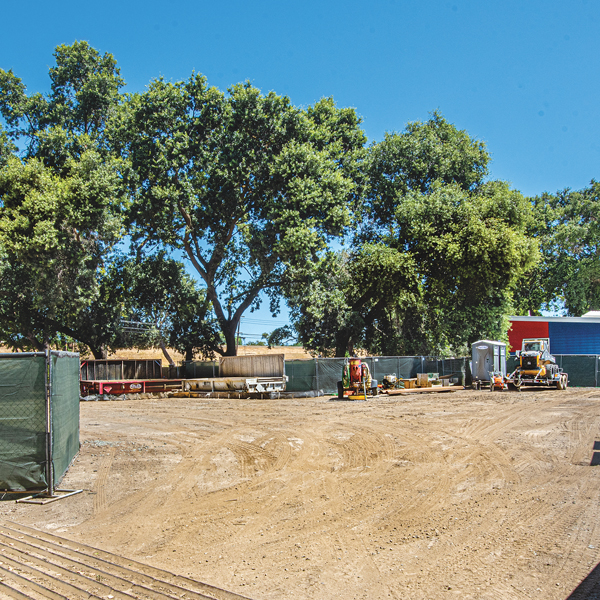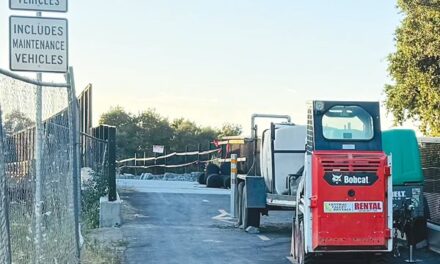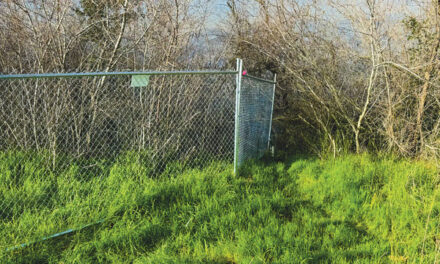A parade of big rigs hauling dirt through the neighborhood has a nasty effect on people. Patience runs out. Residents want their streets back.
Yes, heroic efforts by the Army Corps of Engineers to strengthen the Sacramento River levee in Pocket, Greenhaven and Little Pocket have taken a toll. The public was warned the Big Fix would be large, loud, long and dirty.
Warnings are fine. Then reality hits.

The loudest complaints come from Grangers Dairy Drive near Genevieve Didion School, one of four Pocket and Greenhaven locations known as “haul access points” by the Army Corps and its contractors.
This is where trucks and trailers arrive and depart all day, carting away soil replaced by new seepage cutoff walls designed to prevent levee failure and catastrophic floods.
A noble mission made possible by a schedule that keeps hard hats working from 7 a.m. to 7 p.m. Monday to Saturday. Residents are ready for the job to end.
The Army Corps, renowned for euphemism, explains its work requires “degrading the levee to achieve a working platform up to 50 feet wide” to build seepage walls. What that means is the Army must destroy our levee to save it.
Other Pocket haul access points are Zacharais Park in the north and Axios River Court and Garcia Bend Park in the south. None of these temporary truck lanes are as despised as the Grangers Dairy route.
The other paths are closer to Pocket Road. They disrupt fewer neighbors. The Grangers Dairy track brings big rigs down a quiet street unaccustomed to traffic.
When the $1.8 billion Big Fix was approved in 2016, I figured most controversy would swirl around tree removal.
The levee was covered with trees. Hundreds had to go. Locals hate to see eucalyptus, much less valley oak, chainsawed and shoved into the chipper. But if anyone opposed the destruction, they stayed quiet.
Instead, the major challenge has been the pain that comes when you drop a massive, yearslong construction job into a subdivision. The loudest and most consistent complaint I’ve heard is about trucks.
Unfortunately, there aren’t remedies for trucks. Dirt doesn’t haul itself away. So contractors operate under special guidelines. Rules and regulations are explained in a Big Fix supplemental environmental impact report published in April. It makes for fun reading while waiting for the trucks to clear.
The report describes how to handle lane closures (keep them short as possible and avoid commute hours), warning signs (post them a week before impact), bicycle detours (maintain safe access for pedestrians and cyclists at all times) and damage to local roads (repair potholes and cracks when the project is finished).
The rules mostly seem to work.
No project in Sacramento these days is complete without a mention of homeless people. The Army Corps anticipated it would encounter a few tents along the river. Those tents could interfere with levee repairs.
But unlike city and county authorities who are dumbstruck by the homeless situation, the Army Corps was ready.
“The contractor will work with the city and county of Sacramento and the city’s police department to notify and remove these encampments while construction occurs. Therefore, there will be no socioeconomic or environmental justice impacts,” the report says.
So much for homeless camps. See how simple that was?
The current phase of the Big Fix continues through December. Another, final phase starts next year and ends in 2024.
At the risk of jinxing the project, I can’t finish this column without mentioning one of the Army Corps’ biggest worries, a danger that haunts every shovel of dirt: the discovery of ancient human bones.
“This is a potentially significant event,” the Army Corps says.
If human remains turn up, work stops and protocols are implemented. Mitigation involves asking local Indian tribes to create a work plan.
To keep the Big Fix on schedule, let’s pray old bones stay buried.
R.E. Graswich can be reached at regraswich@icloud.com. Follow us on Facebook, Twitter and Instagram: @insidesacramento.
















